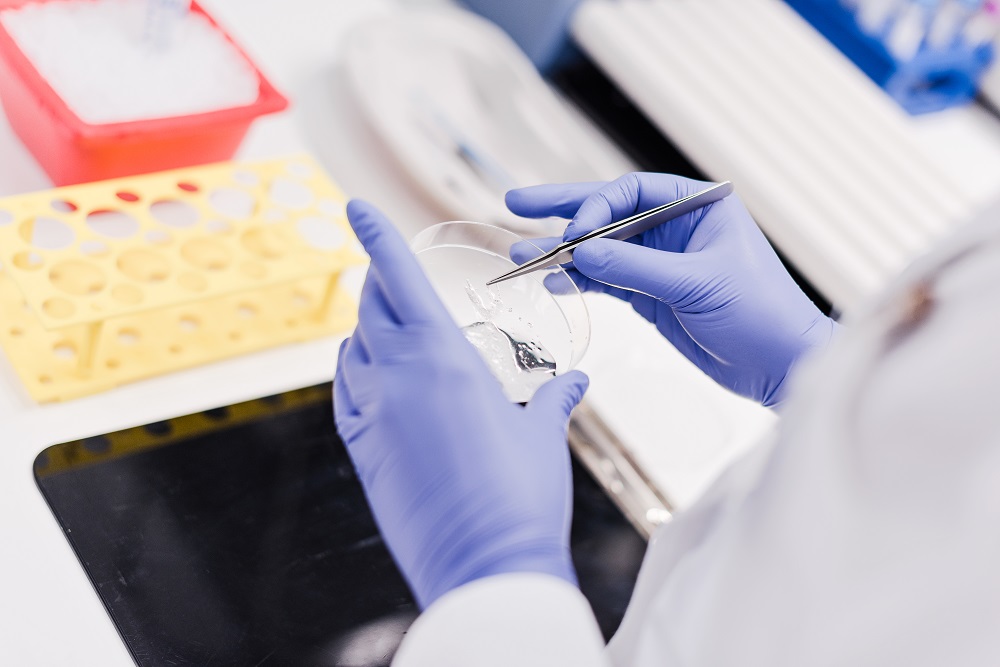A new technology at Fraunhofer ITEM
Chip cytometry: chip-based cell analysis
Chip cytometry is based on the immobilization of cells on special object slides referred to as chips. On such chips, cells can be studied with respect to morphology, expression of surface markers, and intracellular function. Consecutive, iterative staining processes allow a comprehensive immunological and functional characterization of cells. This method enables investigations at the single-cell level and, depending on the cell population, the chips can be stored for up to two years. Chip cytometry is thus superior to other methods of analysis such as flow cytometry, offering the possibility to combine direct optical analyses with repeated staining of single cells, but in particular because the cell material can be preserved after the measurements.

At Fraunhofer ITEM, chip cytometry is being validated for induced sputum at present. Induced sputum obtained from the lungs of test subjects often exhibits limited cell numbers, so that the use of chip cytometry is holding promise for advances in immunological characterization. Furthermore, sputum includes cells of different sizes with specific fluorescence properties, placing special requirements on the measurement method. First data showed good comparability with the standard methods flow cytometry and microscopic cell differentiation. “Using chip cytometry for a complex matrix such as sputum finally allows cell properties to be studied at the single-cell level. This has the great advantage of making matrices with small numbers of cells accessible to clinical research; and of enabling detailed investigation of these cells without the need to define the endpoints to be investigated prior to study start,” says Dr. Meike Müller, head of the Department of Biomarker Analysis and Development. Chip cytometry, therefore, is planned to be used already for first explorative sputum analyses within a clinical trial.
 Fraunhofer Institute for Toxicology and Experimental Medicine
Fraunhofer Institute for Toxicology and Experimental Medicine